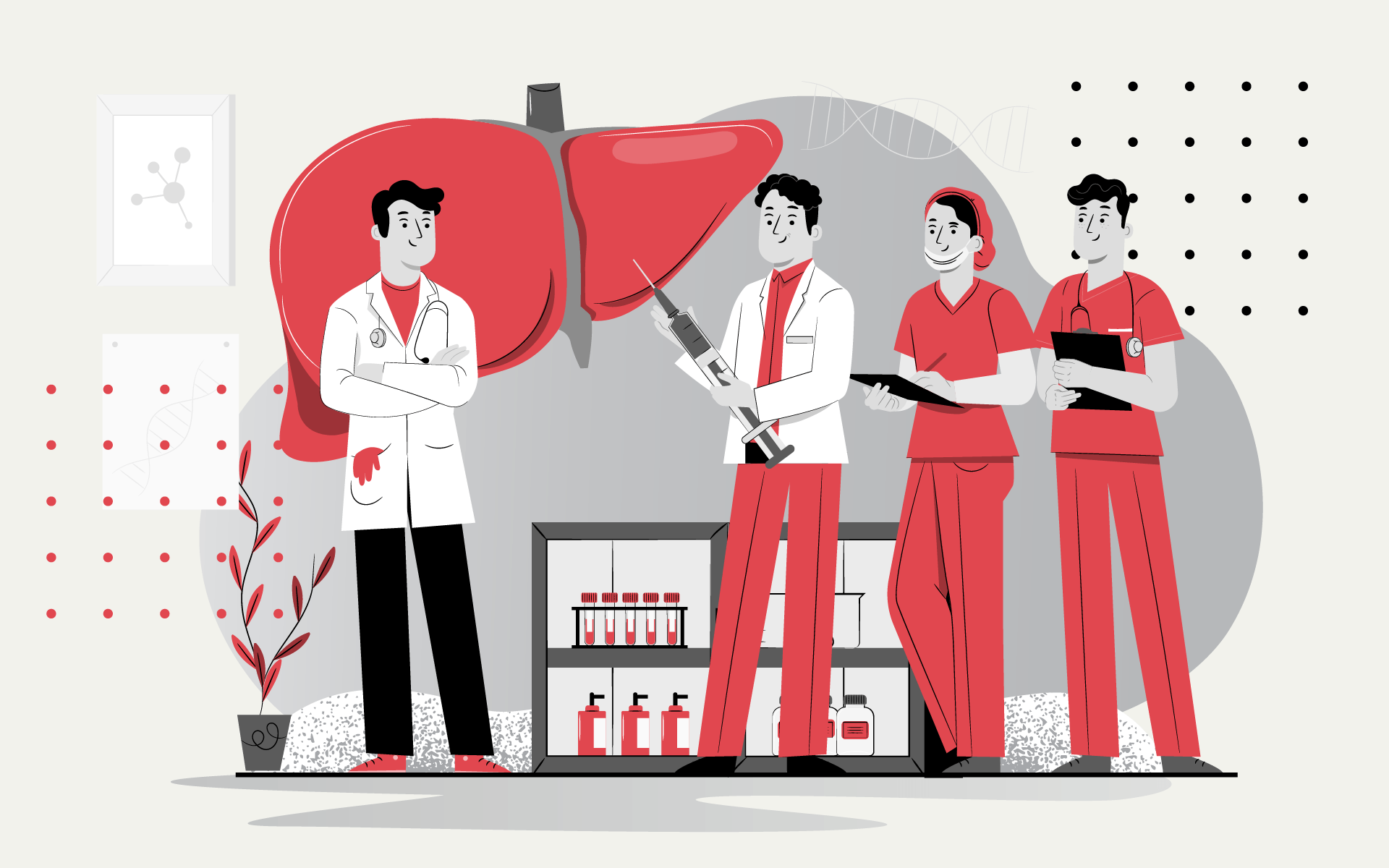 BACK TO ALL
BACK TO ALL

Augmented reality has been actively penetrating our lives: we choose sneakers by visualizing how they would look on our feet, virtually arrange furniture or experiment with the colors of the walls in our house to plan its future design – and all of that can be done with the help of apps. Augmented reality technology has long gone beyond the universe of online games such as Pokemon Go. Last year, Forbes listed augmented reality as one of the top five technology trends of 2021.
Last year's COVID-19 crisis gave a big boost to augmented reality. Naturally, it's a perfect tool for those occasions when you need to be present in real time from anywhere in the world, without any physical contact. Let's take a look at 10 cases when AR can help improve diagnosis, treatment and patient care in healthcare:
Learning apps for medical students and interns
Medicine is the industry that is directly related to human lives, where the slightest mistake can have heinous consequences. Internships help practice skills and avoid errors. Students and interns can use AR training apps with an expanded 360° view, which can help them safely practice their actions in a variety of situations, repeating them as many times as needed. And, most importantly – with no real lives and catastrophic mistakes involved.
Surgery planning
For surgeons, augmented reality can help outline the right surgical plan and practice all the scenarios that might happen in real life. AR allows surgeons to study their patients' anatomy more accurately. All the doctors need to do is enter MRI and CT data into the AR headset and overlay a specific patient’s anatomic features on top of the body, thus visualizing it in detail before actually going into the operating room. This way surgeons can visualize bones, muscles and internal organs without a single cut. It can also help determine the right spots for injections and incisions. Moreover, the same technology can be used to display vital information for paramedics and first responders during medical emergencies.
Taking Care of Mental Health
It's been over a year since CoVID-19 began, and we're still distancing ourselves. Consequently, the new reality couldn't help but take a toll on people's mental health. Isolation and lack of communication tend to negatively impact the well-being of our minds. AR can help combat phobias by immersing patients in an artificially created stressful situation, made safe for the patient. This way they can experience emotions without putting themselves in danger and work through their fears.
Remote consultations
Remote medical consultations have a distinct problem – not all patients can describe their symptoms to the doctor accurately enough to reduce the chance of errors. With augmented reality consultations, the patient can establish contact with the doctor. In turn, the doctor can show the patients how exactly the medications would work in treating their conditions, and how the disease affects the body. All of these processes can be visualized in a way that is easy to perceive and understand.
Portable vein and fracture scanner
Every medical procedure is a very important process. Sometimes even the simplest manipulations (e.g. injections) can be quite challenging for the health professionals performing them. AR can help avoid such complications with its three-dimensional view technology. It allows surgeons to examine their patients’ anatomy through skin and tissue as if they had X-ray vision.
Remote assistance for physicians from colleagues
Doctors can use augmented reality in collaborative surgeries and even conduct video conferencing.
Three-dimensional model of tumors
Comprehensive image reconstruction technology gives surgeons an opportunity to perform X-ray checks in real time without exposing themselves to any radiation.
Rehabilitation
Augmented reality applications can offer a set of exercises for rehabilitation and quality control. We have recently developed such an app, and you can see how it works here
Pain relief
Calm music, beautiful scenery and engaging graphics can distract the patient and reduce pain in those cases where pain medication is not possible or does not give full relief.
Orientation
With augmented reality navigation apps, patients can easily find their way around the hospital facility and get to their destination quicker.
AR navigation apps can be used by patients and visitors alike for calculating the shortest route to the desired location (e.g., to a procedure or to a patient's suite). A hospital augmented reality navigation system would also be handy for entry-level staff to quickly familiarize themselves with the building.
These are just a few examples of augmented reality applications in healthcare. Developing augmented reality applications is a complex and expensive process. However, it will pay off in the number of mistakes that the doctors would avoid. Improving the accuracy of diagnostics and the outcomes of surgeries provides significant potential for the growth of AT in the medical market. After the pandemic, the healthcare system is just beginning to recover, and AR can accelerate this process.
If you need to find a trusted partner with expertise in AR development as well as various medical digital products, you can contact us for a free consultation with our CEO.


